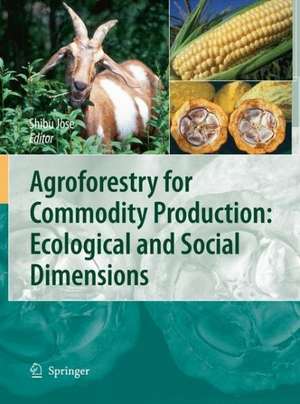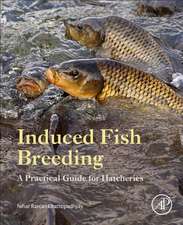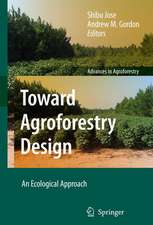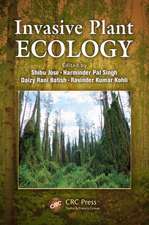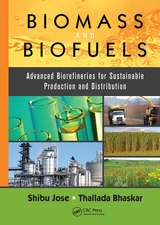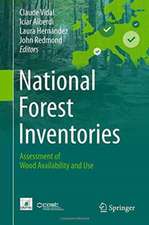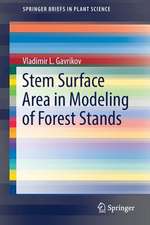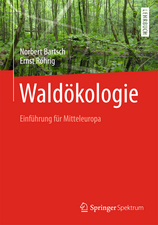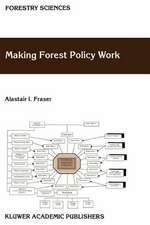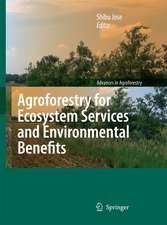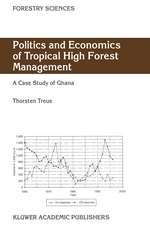Agroforestry for Commodity Production: Ecological and Social Dimensions
Editat de Shibu Joseen Limba Engleză Paperback – 30 oct 2014
| Toate formatele și edițiile | Preț | Express |
|---|---|---|
| Paperback (1) | 792.00 lei 38-44 zile | |
| SPRINGER NETHERLANDS – 30 oct 2014 | 792.00 lei 38-44 zile | |
| Hardback (1) | 801.38 lei 38-44 zile | |
| SPRINGER NETHERLANDS – 5 oct 2009 | 801.38 lei 38-44 zile |
Preț: 792.00 lei
Preț vechi: 1042.11 lei
-24% Nou
Puncte Express: 1188
Preț estimativ în valută:
151.58€ • 157.83$ • 128.10£
151.58€ • 157.83$ • 128.10£
Carte tipărită la comandă
Livrare economică 05-11 martie
Preluare comenzi: 021 569.72.76
Specificații
ISBN-13: 9789400791114
ISBN-10: 9400791119
Pagini: 256
Ilustrații: VI, 247 p.
Dimensiuni: 193 x 260 x 13 mm
Greutate: 0.54 kg
Ediția:2010
Editura: SPRINGER NETHERLANDS
Colecția Springer
Locul publicării:Dordrecht, Netherlands
ISBN-10: 9400791119
Pagini: 256
Ilustrații: VI, 247 p.
Dimensiuni: 193 x 260 x 13 mm
Greutate: 0.54 kg
Ediția:2010
Editura: SPRINGER NETHERLANDS
Colecția Springer
Locul publicării:Dordrecht, Netherlands
Public țintă
Professional/practitionerCuprins
Interactions amongst trees and crops in taungya systems of western Kenya.- Active root distribution pattern of Hevea brasiliensis determined by radioassay of latex serum.- Production physiology of three native shrubs intercropped in a young longleaf pine plantation.- Dry matter partitions and specific leaf weight of soybean change with tree competition in an intercropping system.- Natural abundance of 15N in two cacao plantations with legume and non-legume shade trees.- Soil phosphorus and water effects on growth, nutrient and carbohydrate concentrations, ?13C, and nodulation of mimosa (Albizia julibrissin Durz.) on a highly weathered soil.- Silvopastoralism in New Zealand: review of effects of evergreen and deciduous trees on pasture dynamics.- Pasture production under densely planted young willow and poplar in a silvopastoral system.- Relationship between tree canopy height and the production of pasture species in a silvopastoral system based on alder trees.- Changes in limiting resources determine spatio-temporal variability in tree–grass interactions.- Are drought and wildfires turning Mediterranean cork oak forests into persistent shrublands?.- Allelopathic effects of Eucalyptus urophylla on ten tree species in south China.- Scaling-up productivity (NPP) using light or water use efficiencies (LUE, WUE) from a two-layer tropical plantation.- Modeling cotton production response to shading in a pecan alleycropping system using CROPGRO.- Transitioning from wild collection to forest cultivation of indigenous medicinal forest plants in eastern North America is constrained by lack of profitability.- Coppicing improved fallows are profitable for maize production in striga infested soils of western Kenya.- Adoption potential of selected organic resources for improvingsoil fertility in the central highlands of Kenya.- Current situation and prospects of Jatropha curcas as a multipurpose tree in China.- Complementary labor opportunities in Indonesian pulpwood plantations with implications for land use.
Notă biografică
Shibu Jose is Professor of Forest Ecology in the School of Forest Resources and Conservation at the University of Florida. He has authored more than 100 research articles that deal with ecological interactions, production ecology, and restoration ecology and edited four books. He currently serves as Editor-In-Chief of Agroforestry Systems, Book Review Editor of Forest Science, and Editorial Board Member of Research Letters in Ecology. He has also served as Editor of Journal of Forestry and Editorial Board Member of Tree Physiology in the past.
Textul de pe ultima copertă
Agroforestry systems have been touted as sustainable production systems that alleviate many of the environmental problems associated with modern production systems. Are they indeed ecologically and economically sustainable? Using case studies from around the globe, this book highlights the potential of agroforestry systems to produce a broad range of commodities. In addition to addressing the biophysical and socioeconomic dimensions of producing traditional food, fodder and fiber crops, this volume examines the potential to integrate biomass crops, botanicals and ornamental plants into agroforestry practices. The book should be particularly useful to students, professionals, researchers and policy makers involved in natural resource management, agroforestry, and environmental management.
Previously published in Agroforestry Systems, Volume 76, No. 2 (2009)
Previously published in Agroforestry Systems, Volume 76, No. 2 (2009)
Caracteristici
A collection of original research articles that cover a wide range of commodities produced from agroforestry practices the world over In depth examination of biophysical interactions that define sustainable production in agroforestry systems Exploration of the socioeconomic dimensions - including feasibility, acceptability, and profitability - of various agroforestry practices
